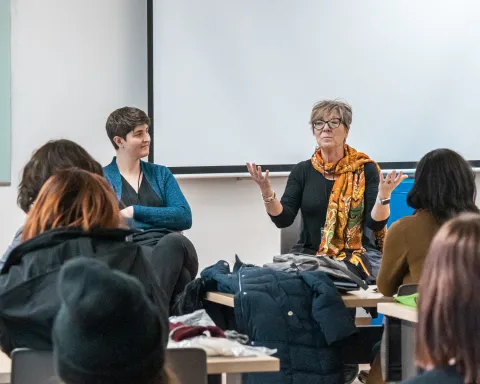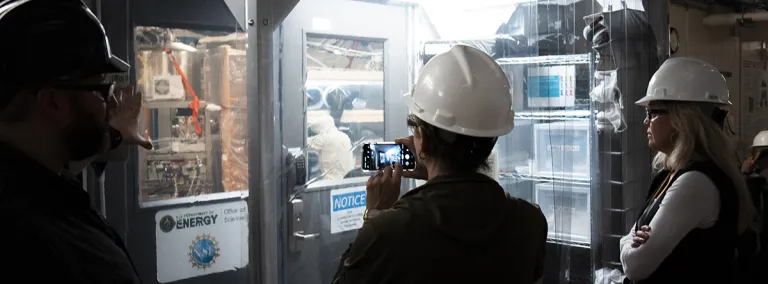The day everyone stops talking about science
What would happen if all science communications ceased tomorrow?
In the past hour, the #science hashtag was used in 300 Twitter posts. Science podcasts have been growing exponentially since 2010, broadcasting conversations about artificial intelligence, biodiversity, particle physics and increasingly niche scientific topics. Hundreds of articles are being published by laboratories and journalists about a myriad of experiments, some of which have yet to begin taking data.
How does this barrage of science serve a world already bursting with information?
To investigate the impact of science communication, we imagined a world without this conversation. We asked science communication professionals what would happen if all science communications—from journalism and podcasts to tweets and memes—went quiet tomorrow. Their immediate response?
“Awful. It would be awful.”
“Nothing good.”
“I’d be worried.”
Given a few additional moments to collect their thoughts, here’s what an educator, two science writers and an astrophysicist had to say about this hypothetical science communication apocalypse:
Science funding would hang by a thread.
“I'd be worried about research being funded,” said Kathryn Jepsen, editor of Symmetry magazine, a joint publication by Fermi National Accelerator Laboratory and SLAC National Accelerator Laboratory, dedicated to covering the latest in the realm of particle physics.
As the editor of a publication supported by two national laboratories, Jepsen noted that much of the basic research in the United States—just over 40 percent—is publicly funded.
“Because of this, the research belongs to everybody,” Jepsen said. “If you're funding research and don't know what comes of it, you're being robbed of something you've contributed to.”
“Modern science is generally done at least in part with public funds and for the public good,” said Mark Hanhardt, research support scientist at Sanford Underground Research Facility (Sanford Lab) and Ph.D. candidate studying astrophysics with the CASPAR experiment. “Without public interest, it wouldn't take long for that funding to dry up. The long-term result would then be technological, cultural and economic stagnation and decline.”
People would lose access to life-altering information.
“If science communication stopped tomorrow, large populations would not have access to information that affected their physical health and basic existence,” said Dr. Mary Caton-Rosser, associate professor of science communication at Black Hills State University.
While viewing an image of a black hole may not drastically alter your lifestyle, fundamental research has long-term implications as it incrementally adds to our understanding of the universe. With the advent of 21st century technology, Caton-Rosser would argue that access to science communication has become a basic human right.
“This has been an era of giving-and-sharing information. Shutting down news on scientific procedures would affect the basic human right to access the information, and even more so, benefit from the outcomes of important research and experiments,” Caton-Rosser said.
“Losing science communication in every form would dramatically lessen our understanding of our place in the universe, but also how we live our daily lives,” said Constance Walter, communications director at Sanford Lab. “From our earliest days, we’ve needed to communicate in order to make healthy choices about what we eat and how we heal. In the broadest terms, we would not have the knowledge we need to make informed, day-to-day decisions.”
Science would become faceless.
Science communicators do more than distill facts from scientific publications—they bring the faces behind the research to the forefront of the story. Today, you can read about the bee whisperer who taught her hive basic mathematics, the blossoming research communities of Latin America and a researcher whose legacy influenced the field of dark matter.
“You have to use story,” said Jepsen. “If readers can feel the researcher’s emotions—frustration, surprise and even embarrassment—then people can imagine themselves in the shoes of a scientist. That's where they can expand their view of who a scientist is and what science is actually like.”
The next generation of researchers would be scarce.
In the absence of such storytelling, young learners might view science as an uninspiring collection of statistics and scatterplots.
“We can't ignore that tomorrow's scientists are inspired by today's science communication, just as today's scientists were inspired by yesterday's science communication,” Hanhardt said, musing on his own early interest in the field.
“If it weren't for access to cool scientific ideas and the excitement of breaking science news, I wouldn't ever have become a scientist myself,” Hanhardt said. “I would probably be wasting my life somewhere as a pathetic, multi-platinum-album rock star surrounded by millions of fawning fans living a life of opulence and excess. I shudder to think about it.”
Ultimately, science would cease.
“Science requires good communication with the larger world to work,” said Hanhardt. “Ideas and questions generated by cutting-edge science give rise to new ideas and questions from the public, which then lead to deeper ideas and questions to investigate for science.”
Inherent human curiosity, Hanhardt went on to say, is what drives science forward.
“Talking about science is simply learning," Walter said. "Without it, we stop learning, and we start moving backward."
Keep talking
The proposition of science communication ending overnight (albeit drastic) and the suggested consequences (dire as they may seem) highlight the importance of continuing the scientific conversation across platforms. In the end, the professionals agree that it’s simply best not to find out what might happen in such a vacuum.
“I think it’s best we all just keep talking about science,” said Walter.

